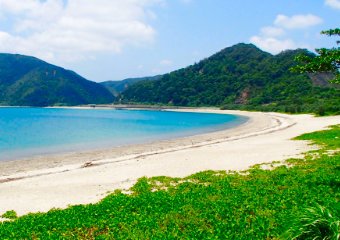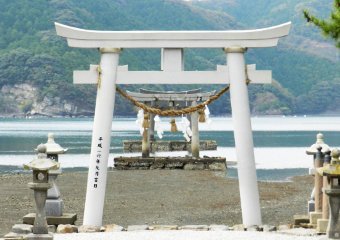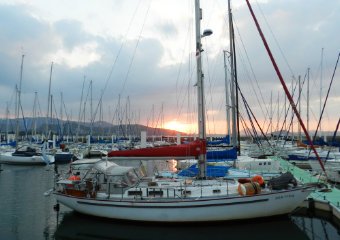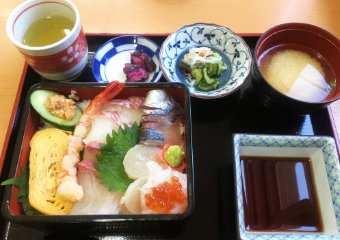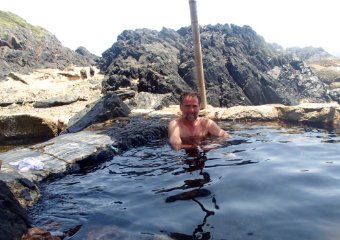Japan is a great cruising ground, but, like any place, it has own unique challenges and peculiarities. Being conservative and cautious, as well as respectful of local customs, will go a long way toward having a wonderful and safe time in Japan.
From his six years of cruising Japan, Kirk Patterson, the founder of Konpira Yacht Services, shares some tips and tricks to make the most of your cruising experience.
1 Forget Your Anchor, Learn to Love Concrete
Although anchoring is possible in a few areas of Japan, one never needs to anchor – I haven't used my anchor once since arriving in Japan in 2013. Instead, one typically moors in well-protected fishing ports, side tied to concrete walls. Moorage in a fishing port is almost always free, but one can't reserve – you just have to poke your bow in and find a spot. And you can't leave your boat unattended in a fishing port and go traveling – for that, you need to go to a marina.
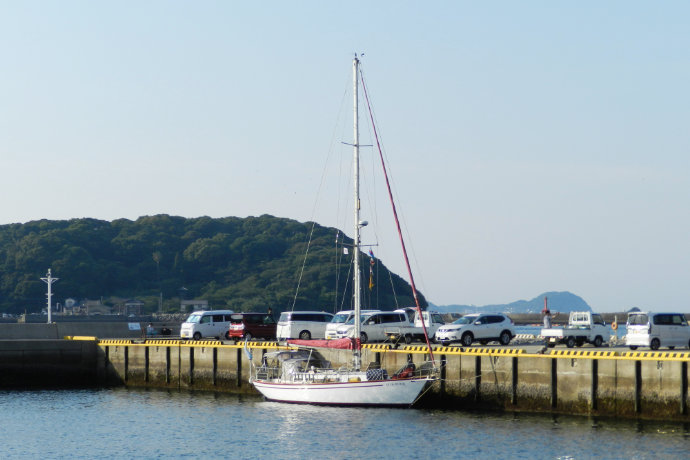
2 Bounce, Don't Hit!
The small fenders cruisers typically use in marinas don't do the trick when mooring against concrete walls. In particular, most walls in Japanese ports have large black rubber bumpers sticking out, so fenders need to be wider than those. On my boat, I have two large Tuff End round rubber fenders, a fender board, and two jumbo styrofoam fenders (very common in Japan, but they are easily destroyed when the surge pounds them against the wall, so buy the heavy burlap-like bags and rope webbing to protect them).
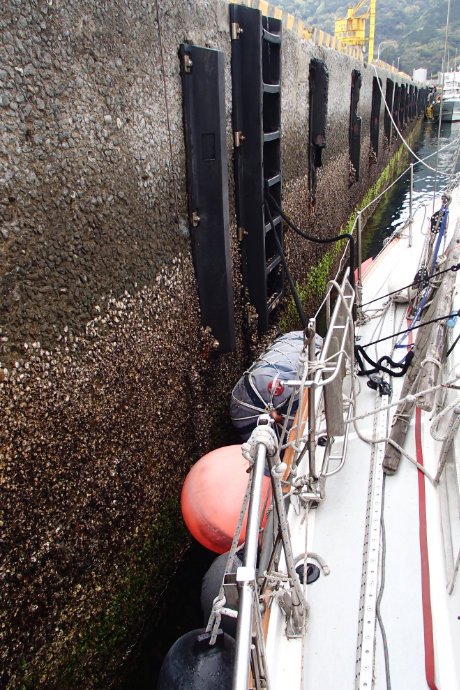
3 Climb, Don't Jump
When side-tied against a wall or breakwater, especially in the Seto Inland Sea, low tide can find you four or more meters from the top of the wall. So, always carry a ladder (light-weight folding aluminum ladders are best). And make sure the ladder is where you are here ... it's not much use for you on the boat when you are standing on the dock looking down!
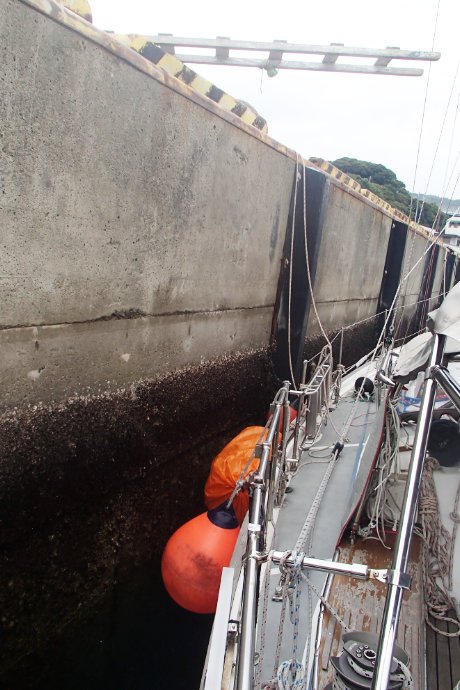
4 Prepare to Dive
A local species of sargassum seaweed (hondawara in Japanese) is a major inconvenience for cruisers, fouling propellers and requiring a constant, vigilant watch when underway. Clinging to underwater rocks in southern Japan, it is released in the early spring and catches the Kuroshio current to flow north to Kyushu, Shikoku, and southern Honshu, occasionally entering the Seto Inland Sea. It is worst in the Ryukyu Islands in April-May, but, perhaps due to climate change, the hondawara patches are getting bigger and more numerous, lasting longer, and flowing further north. So it's helpful to have a GoPro camera or other means to check your propeller and gear to allow you to dive and clear away the seaweed.
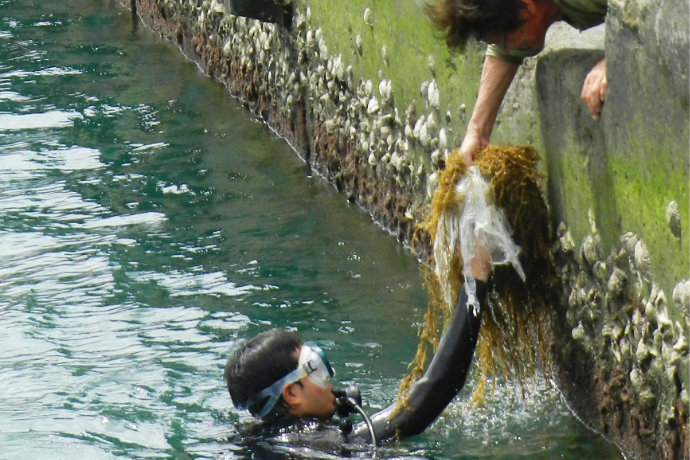
5 Go with the Flow, Literally!
Some parts of Japan, notably the Seto Inland Sea, have fast currents, exceeding ten knots at times. It is therefore important to check the current tables (in the Japanese Coast Guard website, some digital charts, and elsewhere) and time your passage for near slack. But if you want a real adrenalin rush, run the Naruto whirlpools at the eastern end of the Seto Inland Sea (and don't worry about the sucking sensation as you enter a whirlpool because you will quickly pop out the other side ... normally!).
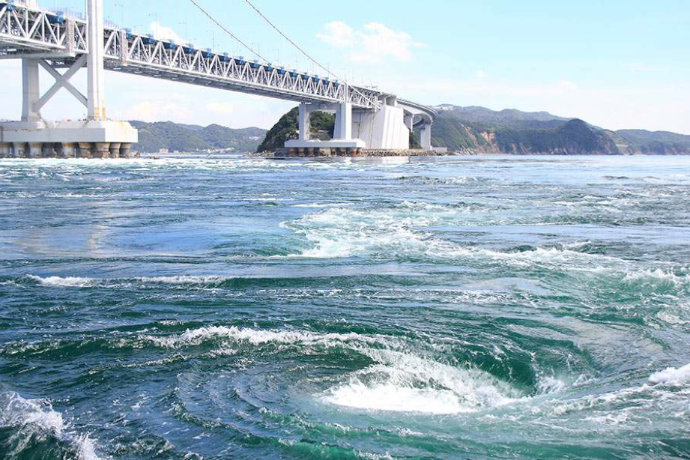
6 Don't Be Dracula, Love the Daylight
Overnight passages are a good way to cover a long distance quickly, but they are not recommended for Japan. There are too many things that "go bump in the night" – like fixed fishing nets (hit one of those and you're in for a ¥300,000+ (US$3,000) fine and/or a week or two in port for "questioning"), like one-man fishing boats on autopilot (such as the one that hit and dismasted a German cruiser, delaying their departure from Japan by a year), and like freighters rushing to port (and which wouldn’t hear your bump!).
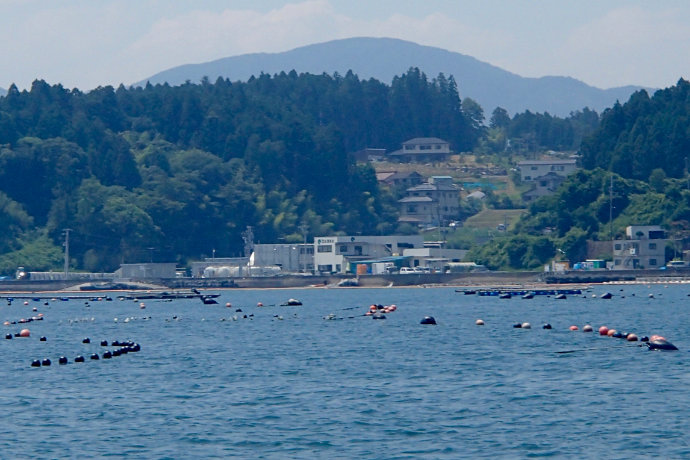
7 No Fuel Docks, No Worry
Except at major marinas, there are no fuel docks in Japan. I thought that would make getting fuel a hassle, but, in fact, it's amazingly convenient. While moored at a fishing port, just go to the local gas station and ask for keiyu (diesel) while pointing vaguely toward the direction of your boat – they'll get the message! A few minutes later, a mini-tanker-truck will pull up on the concrete wall beside your boat and the driver will very carefully fill your tanks and, if you want, your jerrycans. No charge for the delivery service.
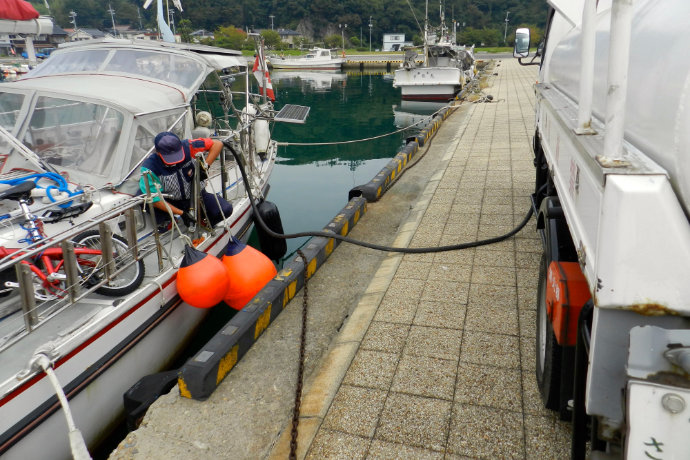
Got Questions?
Contact us for information on how Konpira Yacht Services can help you experience the wonders of Japan's oceans.

